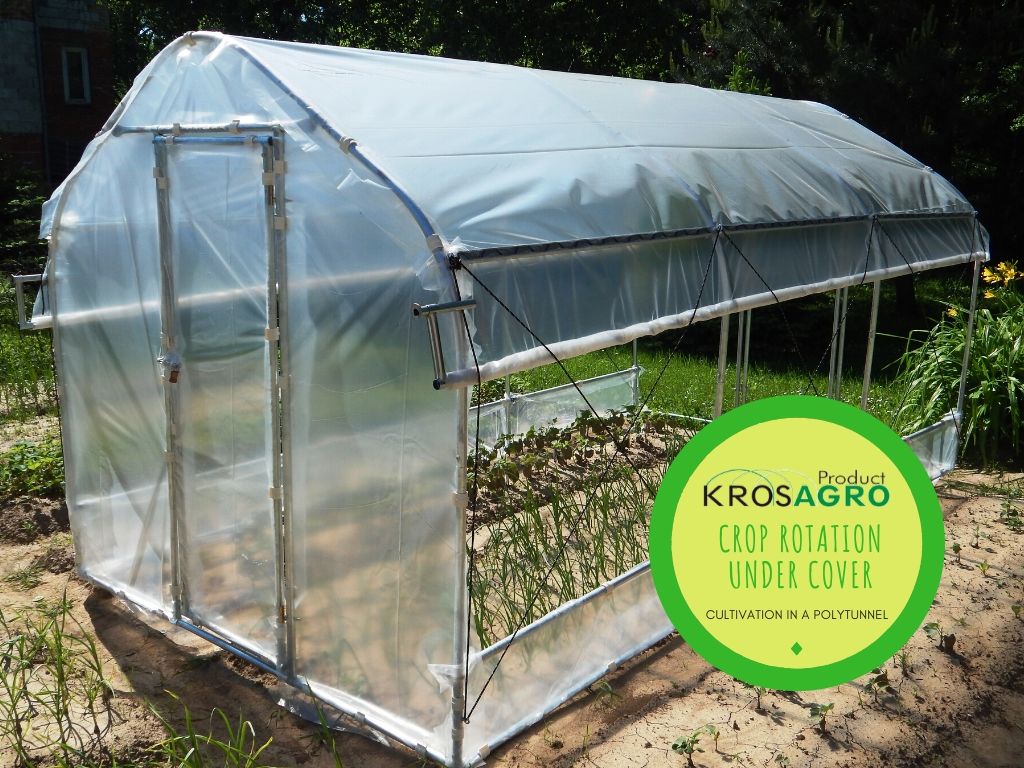Crop rotation under cover is about planting in order to create favorable soil conditions for the following crops. Thanks to this system, plants grow more efficiently, offering a greater yield and with a lesser risk of diseases. Importantly, pests appear less frequently with such a rotation. In this Krosagro article, we will tell you what this consists of and how to implement plant rotation in a greenhouse.
Contents
Crop rotation under cover in a polytunnel
This practice is not something new. It has been used in agriculture for centuries. Crucially, it is one of the most ecological methods to grow fruit and vegetables. This principle determines which fore-crops and after crops to plant on a given site for the next few years. 4 (or a multiple of four) vegetables are necessary for this method to work.
How to plan a crop rotation?
Soil in a polytunnel, before introducing crop rotation, must be divided into four segments, separated by paths or the walls of a gardening crate. Each site should be thoroughly dug, improved with fertilizer, enriched with manure or liquid manure and then leveled. It is good to divide crops into four categories: plants with high, medium, low nutritional requirements as well as ones with long-term development. One can also separate vegetables according to frost sensitivity, root, brassica or legume type.
What is important for crop rotation?
When implementing the method, it should be understood that growing plants has an environmental impact. Knowledge about their needs and creating optimal conditions for crop development is crucial. That is why it is essential to monitor what is happening in your soil. Monoculture can be very harmful in the long run. Soil fatigue has consequences, and reverting those effects is very expensive and constitute a slow process. You can prevent this by organizing successive vegetables and fruit productions. Forecrop plants will appear first. These are resistant to low temperatures, with short maturation time and low requirements. This category includes radishes, lettuce, dill, onions, etc. As soon as they mature, more crops are planted, with higher requirements and at the very end of the season, the less demanding ones.
Coordinated cultivation in a polytunnel
Every gardener should keep in mind that certain combinations are beneficial and some others limit growth. For example : carrots and onions, with the latter repelling pests affecting carrots. Carrots in return, have a similar positive influence on onions. Carrots can be combined with beans, chives or radishes, while the proximity of cabbage, potatoes or beetroot is not recommended. This is just one example and there are many potential possibilities. We already mentioned this topic in the article “aftercrops in a polytunnel”.
